Sony PlayStation 2
Top 10 Best Sony PlayStation 2 Games of All Time!
Records are made to be broken. The Sony PlayStation was the first console to sell in excess of 100 million, but the PlayStation 2 reached the 150 million mark worldwide! Its ability to play DVDs expanded its success beyond the gaming market, as it was one of the first low-cost DVD players released in Japan. The unprecedented success of the PlayStation 2 squeezed the Sega Dreamcast off store shelves, and Microsoft and Nintendo were left fighting for table scraps. Although both the Xbox and GameCube were more powerful than the PlayStation 2 in most regards, Sony’s console was an unstoppable sales juggernaut and attracted the most support from third-party publishers. More games were released on the PlayStation 2 than on the Dreamcast, Xbox, and GameCube combined!
10
Ratchet & Clank: Up Your Arsenal
2004
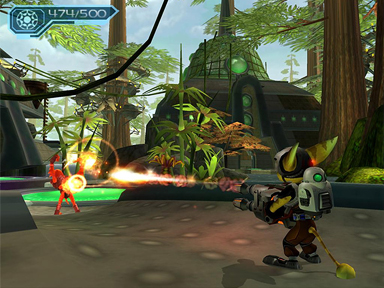
The gameplay in the Ratchet & Clank games could be described as a perfect combination of action and platforming. The series is also notable for the sheer number of weapons and gadgets available to players. Up Your Arsenal features dozens of weapons, and each can be upgraded to eight levels. These weapons are highly creative and include everything from transformation beams that turn enemies into sheep, to giant disco balls that can force enemies to dance. The levels themselves are almost as creative as the weapons, and various gameplay styles are represented. Driving sections, arena combat, and quirky side-scrolling 2D stages can all be found in the game. As the third Ratchet & Clank game on the PS2, Up Your Arsenal features refined controls, more weapons, a deeper upgrade system, and improved physics. It’s also the first game in the series to feature an online multiplayer component. Incidentally, modes like “Deathmatch” and “Capture the Flag” work just as well for 3D platformers as they do for first-person shooters. The Ratchet & Clank games look like cartoons and feature a lot of sophomoric humor, but the series has a lot more depth than their colorful exteriors might suggest.
9
ICO
2001
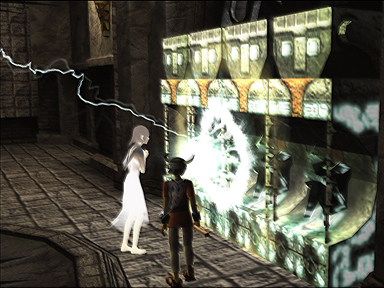
ICO is one of the most atmospheric games of all time, and it’s easy to understand why the game is often brought up in the “games as art” debate. The minimalistic approach adopted by ICO eliminates most of the superfluous gameplay elements that afflict so many other games. The game’s premise revolves around a cursed boy and an ethereal princess who have been imprisoned. These characters speak different languages and cannot understand each other, but they are united by a common plight and must work together to escape from their prison. Much in the same way that the characters in the game are able to form an emotional bond despite not being able to communicate with each other, the game itself is able to achieve a high level of immersion without having to rely too heavily on dialogue or cinema scenes. By and large, the game’s environments are able to define the entire story. The gameplay in ICO is based around various environmental puzzles. Players aren’t given a lot of direction in the game, and are instead encouraged to exercise logic and pay attention to their surroundings. This helps accentuate the ambiance of the game and makes the entire experience feel more rewarding for the player. Without question, Ico ranks as one of the most memorable and emotionally gripping games to ever grace the PlayStation 2.
8
Burnout 3: Takedown
2004
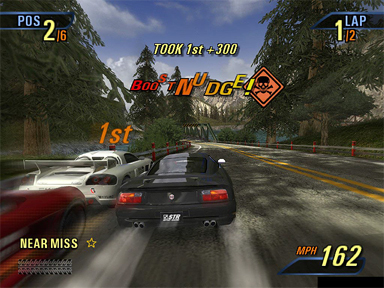
When most people think of great racing games on the PlayStation 2, the Gran Turismo series is likely the first thing that comes to mind. Burnout 3 may not be as realistic as Gran Turismo, but it’s faster, it’s more action-packed and – most importantly of all – it’s more fun. Burnout 3 is easily one of the best-looking PS2 games (it runs at a silky-smooth 60 frames-per-second and has widescreen and progressive scan support) and the special effects are simply amazing. The sense of speed in the game is incredible, and you can almost feel the impact of the crashes. Weaving in and out of traffic is exhilarating, and driving head-on into oncoming traffic can really get the adrenaline flowing. With five different gameplay modes and 173 events to complete, Burnout 3 is one of the most complete racing games ever. There are nearly 70 vehicles to unlock as well, including city busses and fire trucks. The ability for up to eight players to compete against each other online contributes further to the game’s replay value. Burnout 3 is arcade-style racing at its finest.
7
God of War
2005
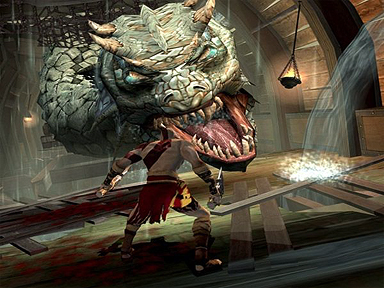
God of War is one of the most intense action games of all time. The boss battles are epic, the story is engaging, the presentation is incredible, the overall atmosphere is unforgettable, and the production values are of the highest caliber. It’s almost hard to believe that a PlayStation 2 game can look as good as this game does. At the end of the day, gameplay is what really matters. Rest assured, God of War succeeds in this area too. The combat system is remarkably intuitive, and chaining various attacks together is actually enjoyable. The game is somewhat hampered by the single most unsympathetic protagonist in the history of the medium, but God of War is still a brilliantly-designed game in many regards. The game also has boobs. Boobs are always good, right? God of War II would also worthy of a spot on this list, but I decided to recognize the original instead because it’s more evenly paced and has a higher concentration of awesomeness.
6
TimeSplitters 2
2002
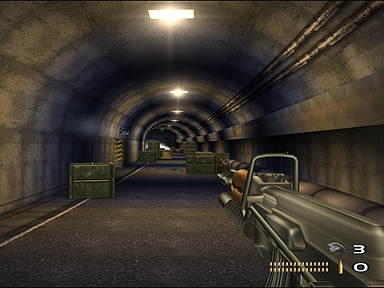
TimeSplitters was one of the best first-generation PlayStation 2 games. The studio behind the game included staff members who helped make GoldenEye 007 and Perfect Dark, and there were obvious similarities among the games. TimeSplitters 2 improved upon the original in many ways. The levels were more interesting, the sense of humor was more pronounced, and more options were added to the arcade and multiplayer modes. The “time travel” theme allows for incredible diversity. During the game, players will engage gangsters in a prohibition-era Chicago, take on gunslingers in the wild west, chase wild monkeys through Aztec ruins, battle machines in a robot factory, and encounter aliens in a space station. Players will also find weapons appropriate for each era. (Tommy guns, crossbows, flamethrowers, plasma rifles, and bricks are among the dozens of weapons featured in the game.) In addition to the central missions, TimeSplitters 2 contains additional “arcade” and “challenge” modes that encompass a wide variety of scenarios. No FPS would be complete without multiplayer options, and TimeSplitters 2 really shines in this department. By using the PS2’s System Link, up to sixteen players can compete simultaneously. The death matches themselves are highly customizable and players can even create their own maps! The game also features a co-operative mode in which two players can take on missions together. All three TimeSplitters games were amazing in their own right, but TimeSplitters 2 has the most replay value. It’s easily the best first-person shooter on the PlayStation 2.
5
Metal Gear Solid 3: Snake Eater
2004
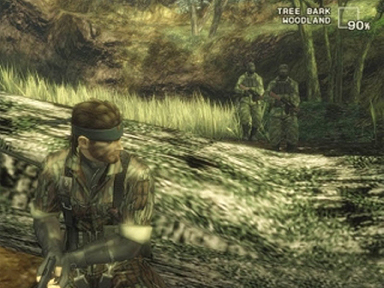
Metal Gear Solid 3 is arguably the greatest game in the series. The jungle environments lent themselves well to the stealth-based gameplay, and they felt a lot more immersive than the lifeless industrial areas from previous games. Generally speaking, the environments play a much larger role than they did in previous Metal Gear games. Players are not only encouraged to blend in with their surroundings, but they also have to rely on their environments for sustenance. If players don’t find enough food to eat, their stamina will be depleted and the abilities will decline. Needless to say, a grumbling stomach is not exactly beneficial to someone who is trying to be stealthy. Since Snake Eater is a prequel, its story helps explain the origins of several Metal Gear characters and gives us a better understanding of the entire Metal Gear mythos. In true Metal Gear fashion, Snake Eater contains numerous plot twists. This time around, though, the twists are both shocking and logical. I’d be remiss not to mention that Snake Eater has some of the best villains ever seen in a video game; and the final boss battle is nothing short of epic.
4
Shadow of the Colossus
2005
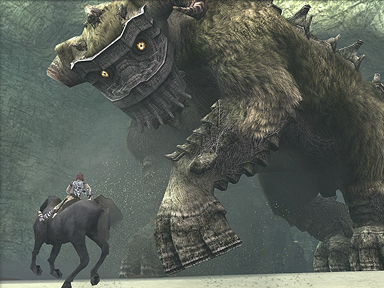
Shadow of the Colossus is a “spiritual sequel” to Ico and one of the most unconventional adventure games ever. There are no dungeons to work through, no towns to explore, no characters to interact with, and no minor enemies to spar with. The entire game consists of sixteen epic battles with towering Colossi. And make no mistake about it; these battles are inspired. Very little guidance is given during the game, so players are forced to make use of their surrounding environments in order to advance. In fact, the Colossi themselves are often part of the environments. Shadow of the Colossus stands as a perfect example of how storytelling in video games should be done. The characters and objectives are well defined, but players don’t have to fight through walls of text and boring cinema scenes in order to understand what’s going on. The game doesn’t attempt to mimic Hollywood movies, and its developers clearly understood that video games are supposed to be interactive. The game instills an intense feeling of isolation, and the plot has a lot of emotional weight despite venturing away from traditional storytelling devices. Shadow of the Colossus is the most artistically brilliant game to ever grace the PlayStation 2. The limited color palette, the openness of the environments, and basically every other aspect of the art direction plays off of the central themes of loneliness and isolation. Shadow of the Colossus is unconventional in may ways, but it’s one of the few PlayStation 2 games that is basically guaranteed to stand the test of time.
3
Ōkami
2006
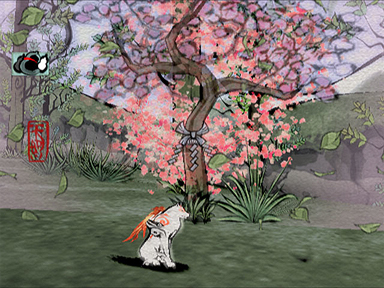
Ōkami is Clover Stuido’s masterpiece and the closest thing PlayStation owners ever got to a Zelda game of their very own. The game incorporates fundamental play mechanics from action, adventure, platforming, and puzzle genres, and everything is tied together with effective storytelling that’s inspired by Japanese folklore. The watercolor-inspired cel-shaded graphics help create some of the most visually stunning environments ever seen in a video game, and the innovative “celestial brush” mechanics help immerse the player into the virtual world. By performing various gestures with the PS2’s left analog stick, players can create a number of miraculous situations. There are several techniques to master and, in time, players will find themselves calling forth strong winds by drawing loops, cutting down enemies by drawing lines through them, and creating bridges by painting them in place. Few PS2 games rival Ōkami in size and scope. There always seems to be more side quests to complete, dojos to visit, and techniques to master. Ōkami is a masterful game on almost every level, and it’s surprisingly easy to lose yourself in the game.
2
Grand Theft Auto: San Andreas
2004
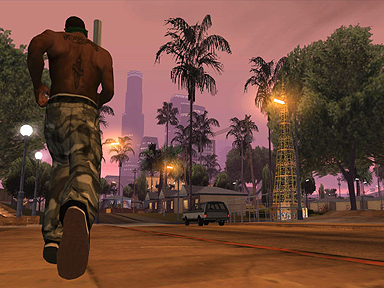
Grand Theft Auto III was a breakthrough title in every sense of the word and helped revolutionize the entire industry. Its large, open-world environments were basically unrivaled at the time, and the amount of freedom given to players was nothing short of extraordinary. Vice City built upon the same basic formula and brought an awesome 1980s theme to the franchise, and San Andreas pushed the envelope even further. With three different cities to explore, San Andreas is four times larger than Vice City. The gameplay mechanics were also refined in many regards. The ability to swim and climb walls made the game feel even more liberating than its predecessors. San Andreas features over 200 cars to steal – including bicycles, dune buggies, combines, street sweepers, and hovercrafts. The ability to customize vehicles adds even more variety to the game. Players can customize their own character, too. Clothing, haircuts, and accessories can all be personalized, and the physical appearance of your character is actually affected by diet and exercise. It’s easy to see why San Andreas is the best-selling PlayStation 2 game of all time. You simply aren’t going to find a more ambitious game on the system.
1
Resident Evil 4
2005
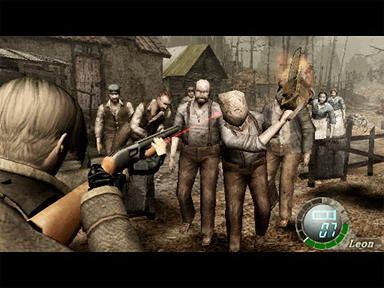
Resident Evil 4 revolutionized the survival/horror genre. The game’s new “over the shoulder” perspective was more liberating than the static camera angles that previous Resident Evil games used, and it gave players more control over their movement. The aiming and shooting dynamics were also retooled and allowed for more precision. These new conventions put more focus on action and allowed for epic shootouts involving crowds of zombies in open areas. Improved enemy AI, an new inventory system, and one awesome boss battle after another round out the reasons why Resident Evil 4 is held in high acclaim. During the development phase of Resident Evil 4, the game’s director (Shinji Mikami) insisted that he’d cut his head off with a chainsaw if the game were to ever be released on a system other than the GameCube. Much to the chagrin of PlayStation 2 owners, Mikami had to eat his words. Characters in the PS2 version were remodeled with fewer polygons, and some of the more complex lighting and texture effects from the GameCube were removed. The PS2 version made up for these technical differences by including new bonuses and a handful of exclusive side missions. The PlayStation 2 was the dominant console of its day, so it would have been tragic if the console missed out on the best game of the generation.

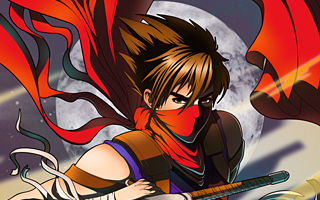
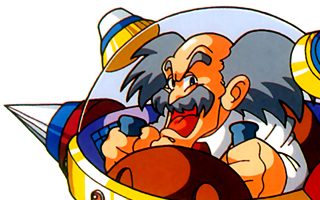
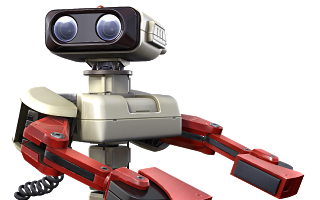
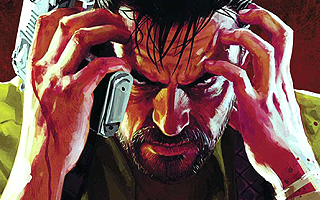
Do you agree with this list? Let us know what you think by leaving a comment below. Your opinion matters!